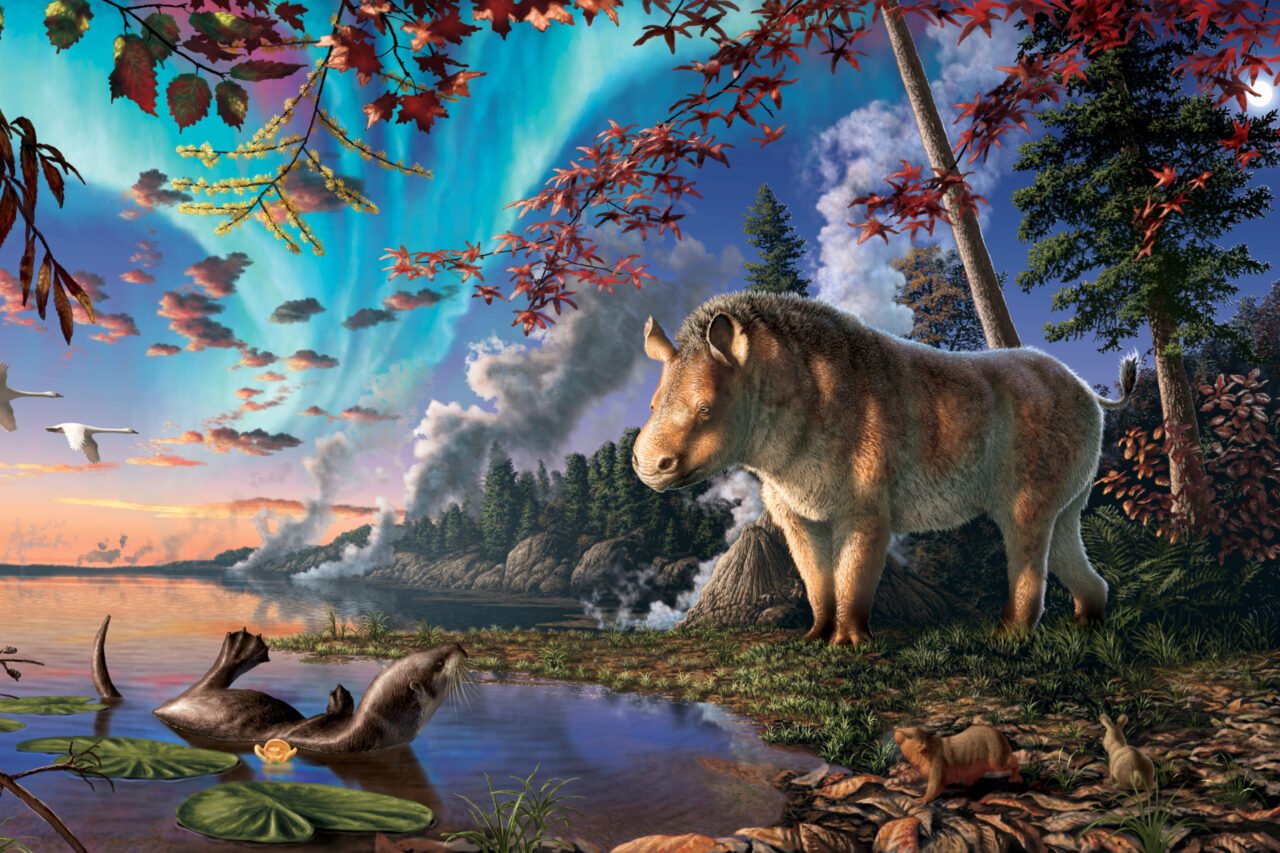Science
Researchers Uncover Arctic Rhino Fossils, Expanding Evolutionary Insight

Researchers have identified a new extinct rhino species in Canada’s High Arctic, providing insights into the evolutionary history of these unique animals. The species, named Epiatheracerium itjilik, lived approximately 23 million years ago during the Early Miocene, making it the northernmost known rhino species. This discovery was detailed in a study published in the journal Nature Ecology & Evolution.
Lead author Danielle Fraser, head of palaeobiology at the Canadian Museum of Nature, emphasized the significance of this find. “Today there are only five species of rhinos in Africa and Asia, but in the past, they were found in Europe and North America, with more than 50 species known from the fossil record,” she stated. The addition of E. itjilik to the rhino family tree enhances our understanding of their evolution.
Fossil Discovery in the Arctic
The name itjilik is derived from the Inuktitut language, meaning “frosty.” Researchers discovered the bones at the Haughton Crater on Devon Island, Nunavut, which was a temperate forest habitat during the Miocene. The nearly complete skeleton is in remarkable condition, with about 75% of the bones preserved.
Co-author Marisa Gilbert, a paleobiologist at the Canadian Museum of Nature, noted that the wear on the rhino’s cheek teeth indicates it lived into early adulthood. “They are three-dimensionally preserved and have only been partially replaced by minerals,” she explained. This exceptional preservation allows researchers to study the characteristics and lifestyle of this ancient creature.
Unlike modern rhinoceroses, E. itjilik did not possess a horn and stood about 1 meter tall, similar in size to a modern muskox. Its habitat likely resembled the forests found in southern Ontario today, suggesting it was a browser that fed on leaves, twigs, and shrubs. These conclusions are based on a limited set of fossil evidence.
Revising the Rhinocerotids Family Tree
The research team also revised the family tree of rhinocerotids and explored their dispersal patterns. Their findings indicate that the Arctic rhino likely reached North America via the now-submerged North Atlantic Land Bridge. This challenges previous hypotheses, which suggested that the land bridge facilitated species migration only until around 56 million years ago.
Fraser highlighted the broader implications of this study: “It’s always exciting and informative to describe a new species. But there is more that comes from the identification of E. itjilik, as our reconstructions of rhino evolution show that the North Atlantic played a much more important role in their evolution than previously thought.”
The discoveries made in the Arctic continue to reveal new knowledge about mammal diversification, reinforcing the region’s role as a critical site for paleontological research.
-

 Science1 week ago
Science1 week agoInventor Achieves Breakthrough with 2 Billion FPS Laser Video
-

 Top Stories2 weeks ago
Top Stories2 weeks agoCharlie Sheen’s New Romance: ‘Glowing’ with Younger Partner
-

 Entertainment2 weeks ago
Entertainment2 weeks agoDua Lipa Aces GCSE Spanish, Sparks Super Bowl Buzz with Fans
-

 Business2 weeks ago
Business2 weeks agoTyler Technologies Set to Reveal Q3 Earnings on October 22
-

 Entertainment2 weeks ago
Entertainment2 weeks agoMother Fights to Reunite with Children After Kidnapping in New Drama
-

 World2 weeks ago
World2 weeks agoR&B Icon D’Angelo Dies at 51, Leaving Lasting Legacy
-

 Entertainment2 weeks ago
Entertainment2 weeks agoRed Sox’s Bregman to Become Free Agent; Tigers Commit to Skubal
-

 Science2 weeks ago
Science2 weeks agoNorth Carolina’s Biotech Boom: Billions Invested in Manufacturing
-

 Health2 weeks ago
Health2 weeks agoCurium Group, PeptiDream, and PDRadiopharma Launch Key Cancer Trial
-

 Health2 weeks ago
Health2 weeks agoCommunity Unites for 7th Annual Into the Light Walk for Mental Health
-

 Health2 weeks ago
Health2 weeks agoNorth Carolina’s Biotech Boom: Billions in New Investments
-

 Top Stories2 weeks ago
Top Stories2 weeks agoDisney+ Launches Chilling Classic ‘Something Wicked’ Just in Time for October









